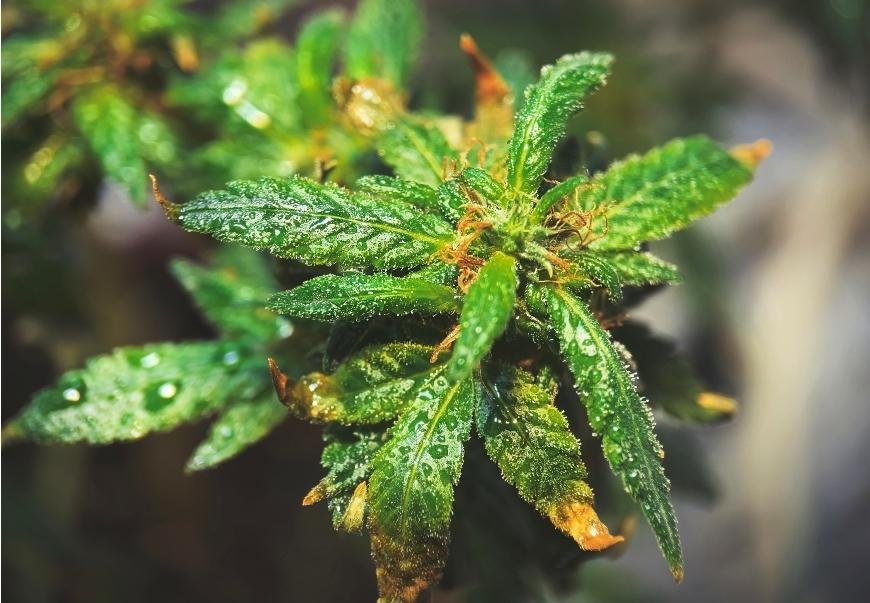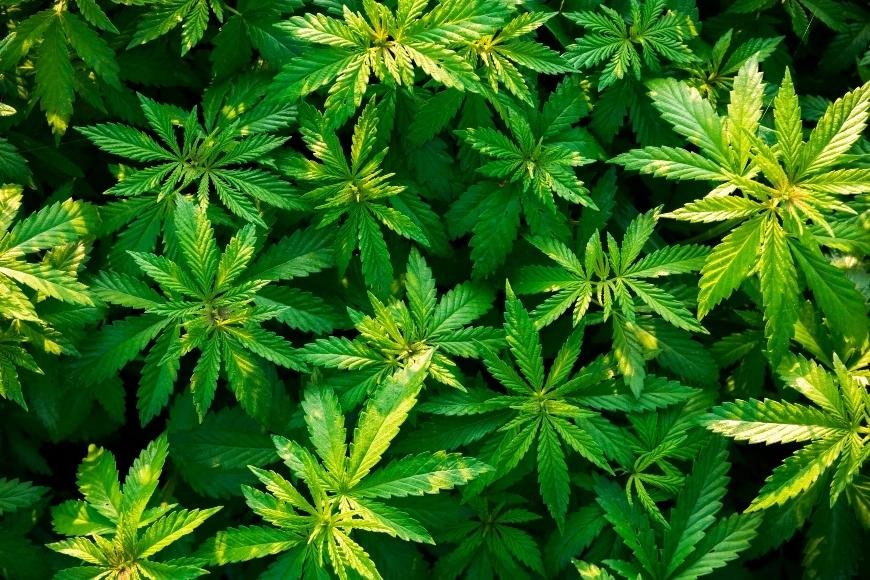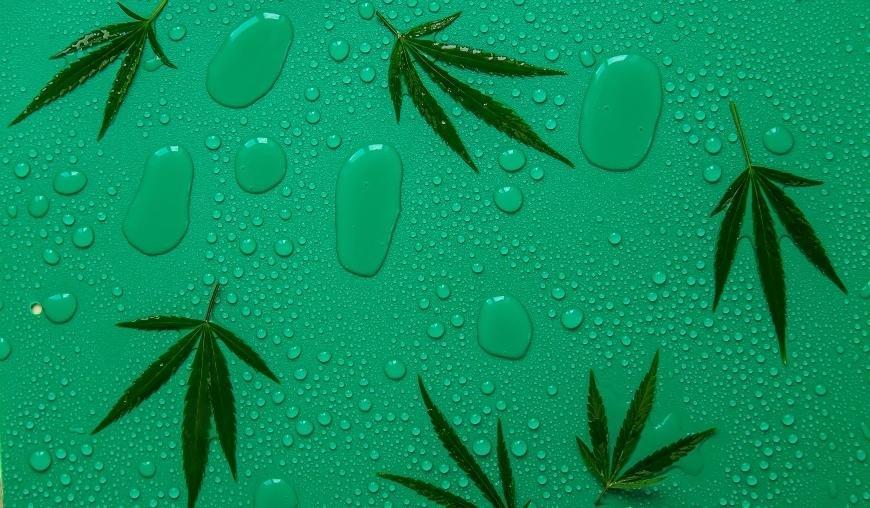How to Flush Cannabis Plants
Learn how to flush cannabis plants for improved quality and taste in our guide, covering benefits, timing, and the flushing process.

Before harvesting, it is essential to flush your cannabis plants with plain water or a flushing agent to rid them of any excess nutrients and salts. Flushing involves watering your plants with plain water or a high-quality flushing agent to remove excess nutrients and salts from the plant tissues before harvest. This article will provide you with an in-depth understanding of how to flush cannabis plants effectively.
We'll discuss what flushing is and why it's important for producing top-notch cannabis. Additionally, we'll cover when to begin flushing, as well as common issues encountered during this process and their solutions.
By following our expert advice on how to flush cannabis plants, you can optimize your grow cycle and enjoy cleaner, smoother-tasting buds without any harsh chemical aftertaste.
Table of Contents:
- What is Flushing Cannabis Plants?
- Benefits of Flushing Cannabis Plants
- When to Flush Cannabis Plants
- How to Flush Cannabis Plants
- Common Issues During Flushing Process
- FAQs in Relation to How to Flush Cannabis Plants
- Conclusion
What is Flushing Cannabis Plants?
It involves removing all fertilizers and nutrients from the plant before harvesting. Removing all fertilizers and nutrients from the plant prior to harvest ensures a cleaner, more powerful cannabis free of any unwanted substances. Flushing can help to boost the flavor, scent and strength of cannabis by enabling better uptake of terpenes in the final product.
When flushing cannabis plants, it’s important to start at least two weeks prior to harvest time. During this period, reduce or stop feeding your plants with any type of fertilizer or nutrient solution. The goal here is to allow for a gradual reduction in nutrient levels so that when you do finally harvest your crop, there won’t be any lingering traces left behind that could affect flavor or potency.
Once you have stopped adding nutrients and fertilizers for two weeks prior to harvest time, begin flushing your plants with clean water only (no additives). Depending on how much water you use each day will determine how long it takes for your flush cycle; generally speaking however, it should take between 7-10 days total until your flush is complete and ready for harvesting. Make sure not to over-water during this stage either; too much water can cause root rot which can ruin an entire crop.
It is advisable to routinely monitor pH levels during the flushing process with a reliable meter available from web-based retailers such as Amazon and eBay. Additionally, one should double-check the TDS readings before initiating the full flush process as higher TDS values indicate an abundance of mineral salts which could further complicate matters.
Flushing cannabis plants before harvesting is a fundamental element of the cultivation process, providing numerous advantages to ensure an optimal and safe harvest. By understanding the benefits of flushing, growers can maximize their yield while minimizing any potential risks associated with consuming contaminated products. Now let's take a look at five key advantages of flushing cannabis plants before harvesting them for consumption.
Benefits of Flushing Cannabis Plants
It helps to improve the taste and potency of your final product, ensuring you get a top-notch experience from your harvest. Flushing involves removing any excess nutrients that may have been applied during growth, allowing for cleaner tasting buds. This process also ensures that any potentially harmful chemicals are removed before consumption.
When it comes to flushing cannabis plants, timing is key. The best time to flush depends on what type of nutrient system you’re using as well as the stage of plant development when harvesting will occur. Generally speaking, it's recommended to start flushing two weeks prior to harvest in order to allow enough time for all excess nutrients and salts present in the soil or solution used during growth cycles to be eliminated from the plant material before being consumed by humans or animals alike.
In order to facilitate the flushing process, one should increase air circulation within their grow room as this will help speed up the salt breakdown due to increased oxygenation levels. Additionally, if growing in soil it is recommended that plain water be used for watering and allowed to sit for 10 minutes between each cycle so that any remaining salts are absorbed into the medium itself instead of sticking around in suspension within the root zone where they could cause harm when consumed by humans or animals alike.
Flushing cannabis plants can help increase the potency and flavor of your buds, as well as reduce any potential health risks associated with residual nutrients. Flushing your plants prior to harvest will guarantee they are in top condition when you decide to partake. Now let's look into when is the ideal time to flush your cannabis plants for optimal results.

When to Flush Cannabis Plants
Flushing of cannabis plants is a necessary procedure during cultivation, ensuring that the plants are free from any left-over nutrients or other substances. Knowing when to flush your cannabis plants is essential for maximizing the benefits of this process.
The best time to flush your cannabis plants depends on several factors, including the type of growing medium you’re using and how far along your plant is in its flowering stage. Generally speaking, flushing should begin two weeks before harvest if you’re growing in soil or coco coir, while hydroponic growers should start flushing a week before harvest.
When it comes to soil-based grows, there are certain signs that indicate when it's time to start flushing. If you notice any yellowing or discoloration of leaves near the bottom part of the plant (also known as “nutrient lockout”), then it may be time to start flushing with plain water. Additionally, if buds appear small and underdeveloped despite plenty of light and air circulation then this could also be an indication that nutrient levels need adjusting via a flush cycle.
For those cultivating hydroponically grown cannabis crops, timing can be a bit of a tricky business depending on the system set up; drip systems may necessitate more frequent flushes than deep water culture systems do. However, as a rule of thumb it is best to begin flushing about one week prior to harvest for maximum efficacy. When employing drip irrigation take care not to inundate your plants with too much H2O in one go - this could easily lead to root rot and subsequently annihilate yields come harvesting time.
Finally, keep an eye out for signs such as wilting foliage or stunted growth; these can both be indicators that something isn't quite right within your grow room setup so don't hesitate to get stuck into some preventative maintenance by way of a good old fashioned flush.
Realizing the right timing for flushing your cannabis plants can maximize harvests and enhance quality, so comprehending when is best is vital. Knowing how to flush cannabis plants properly will ensure that all of the nutrients are removed from the soil or medium before harvest.
How to Flush Cannabis Plants
Flushing involves watering your plants with plain water or a high-quality flushing agent to remove any excess nutrients and flush out salt buildup from soil amendments. When done properly, flushing can help prevent nutrient burn and improve the flavor of your buds.
Generally, 10 gallons of water per square foot of grow space should be used for flushing, depending on the size of the plant. The length of time needed to effectively flush also varies depending on what type of medium you’re using (soil vs hydroponics) and how much fertilizer has been used throughout the grow cycle. Generally speaking, a good rule of thumb is to begin flushing when half or more than half the plant's leaves have yellowed due to nutrient burn - this will give you enough time for all remaining nutrients to be flushed out before harvest.
It’s important not to overflush as this can lead to root damage which could affect yields come harvest time. To avoid overflushing, it’s best practice to monitor crop closely during pre-harvest flushing and check pH levels often – if there’s no significant change after two days then stop flushing immediately. It may also be beneficial for beginner growers studying cultivation techniques to read up on anti-flushers make sure they understand why withholding nutrients places stress on plants before attempting any sort of “foolproof method".
Flushing of cannabis plants is a critical phase in the growth cycle, and it's vital to comprehend how to carry out it properly. As we move on, let's take a look at some of the common issues that can arise during flushing.

Common Issues During Flushing Process
It involves watering your plants with plain water or a high-quality flushing agent to remove any excess nutrients and salts that may have built up during the grow cycle. Flushing your plants can bring about an enhancement in the flavor, aroma, and general quality of your yield if done accurately. However, there are some common issues that you may encounter while flushing your plants.
Nutrient Deficiencies:
Flushing removes all nutrients from the plant tissues and if not done correctly can lead to nutrient deficiencies. To avoid this issue, ensure you’re flushing for long enough (usually about 10 days) and using a high-quality flushing agent that contains trace elements such as calcium or magnesium which will help keep essential minerals in the soil when flushed out of the plant tissues.
pH Imbalances:
pH imbalances can occur when too much of one nutrient is present in relation to another – for example when nitrogen levels are higher than phosphorus levels or vice versa – leading to unhealthy root systems which will affect how well your crops grow. To fix this issue make sure you flush regularly throughout your grow cycle so that any excess amounts of nutrients stored by your plants don't cause an imbalance between different elements in the soil.
We recommend pre-harvest flushing two weeks prior to harvest in order to flush out any remaining fertilizer; however, there are those who oppose this method - dubbed anti-flushers - citing potential negative effects on yield size or potency if done incorrectly. To avoid any issues, it is important to exercise caution and be mindful of the consequences when withholding nutrients from a plant as doing so can place an immense amount of stress on them which could potentially prove fatal.
Finally, remember that each type of amended organic soil has its own unique characteristics and needs so studying cultivation techniques specific to yours is key for successful yields every time. It is important to exercise caution and be mindful of the consequences when withholding nutrients from a plant as doing so can place an immense amount of stress on them which could potentially prove fatal.
FAQs in Relation to How to Flush Cannabis Plants
What is the best thing to flush cannabis plants?
The best way to flush cannabis plants is by using plain, pH-balanced water. This will help remove any nutrients that have built up in the soil and ensure that your plant's root system can absorb all of the necessary minerals for optimal growth. A few weeks prior to harvest, flushing with pH-balanced water can help eliminate any accumulated nutrients in the soil and guarantee that your plant's root system is able to take up all essential minerals for ideal development.
Additionally, it's important to use clean water with no chlorine or other chemicals as these can damage delicate roots and affect taste and smell.
Do you really need to flush cannabis plants?
Yes, it is necessary to flush cannabis plants prior to harvest. Flushing helps remove any residual nutrients and other substances that may be present in the soil or grow medium. Flushing is essential for obtaining a pure product, without any unpleasant tastes or smells caused by surplus fertilizers and compounds. Flushing can also help lessen the levels of potentially hazardous toxins, for instance heavy metals, which can be damaging if ingested in large amounts. Properly flushing your cannabis crop is an important step for achieving optimal results from your harvest.
What is the best way to flush your plants?
The ideal method for clearing out your plants is to irrigate them with a solution devoid of nutrients. This helps remove any accumulated salts and other minerals from the soil that can build up over time, preventing potential nutrient deficiencies in the future. Make sure you water thoroughly until the runoff is clear, as this will help ensure all nutrients are flushed out of the system. Additionally, it's important to allow plenty of time between flushes so that new nutrients can be absorbed properly before another flush occurs.
How often do you flush nutrients out of cannabis plants?
Flushing nutrients out of cannabis plants is an important step in the cultivation process. Typically, it is advisable to flush just before harvesting. Flushing removes any residual fertilizer salts that can cause off-flavors or other negative effects on your crop. It also helps to prevent nutrient lockout, which can stunt growth and reduce yields. Proper flushing will ensure healthy and high quality buds with maximum potency.
Conclusion
By properly flushing, you can remove any residual nutrients or chemicals that may affect taste and potency. Knowing when, how much water to use, and potential problems that may come up during the flushing process are key for achieving a quality product. Flush cannabis plants at least two weeks before harvest for best results.



























































































































